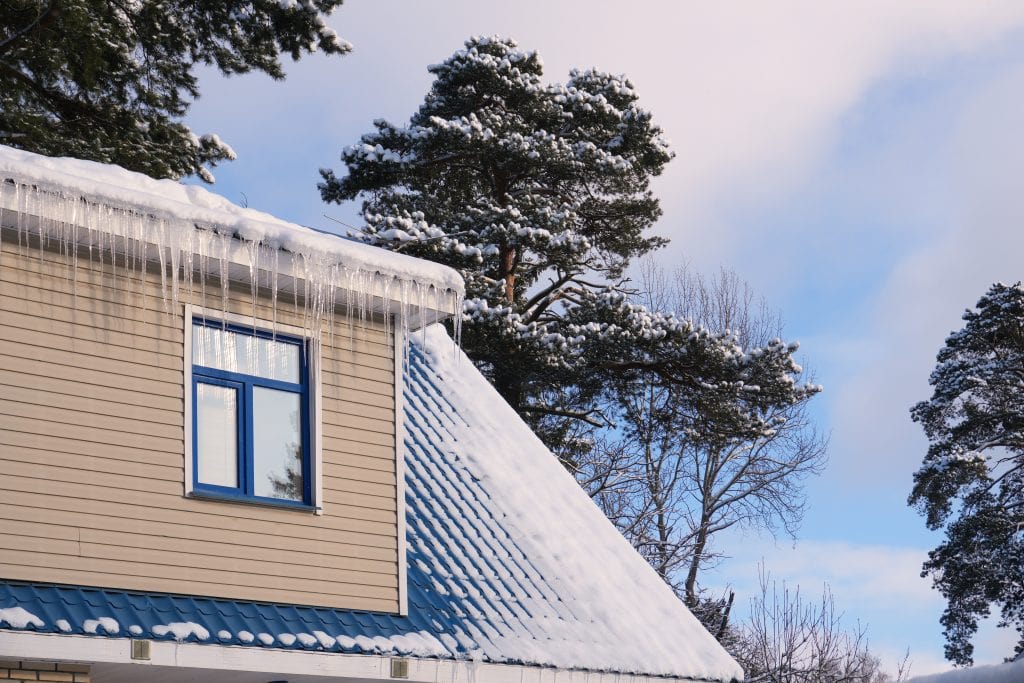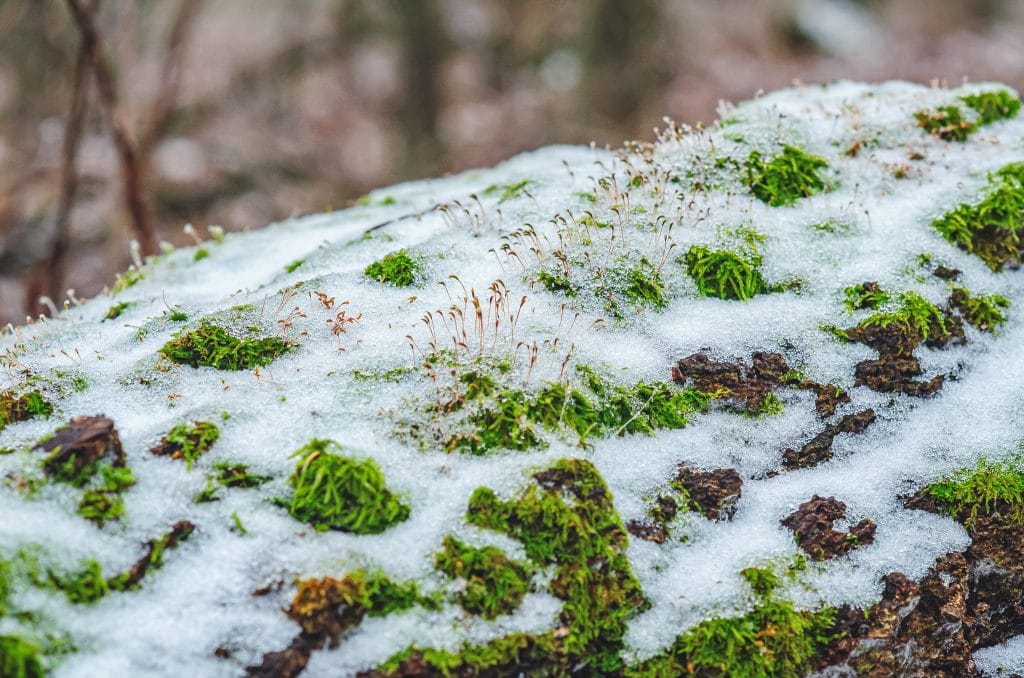
Common Springtime Property Hazards
In Duluth, MN and throughout the Northland, there are risks that property owners face with every season. Springtime is no different, as we transition from cold to warm and back again.
One of the biggest factors in predicting property damage perils is the severity of winter weather that preceded Spring. Snowfall/precipitation, temperature, and wind all have an impact on what types of damage can be expected. With that being said, there is the additional challenge of severe Spring storms which rarely provide the luxury of a forewarning.
The following are some of the most common hazards that property owners face during the Spring months in Northern Minnesota and Wisconsin. Keep in mind that you may run into these hazards before and after spring, but they often occur between the timeframe of March – May.
1) Ice Dams
An “Ice dam” refers to the build-up of snow and/or ice on the roof of your property that traps melting water from running off as it normally would. As this water builds up, it makes its way between the shingles or seams of your roof, and causes damage within your property. Ice dams can be hard to spot by simply looking at the surface of your roof. Oftentimes, they occur underneath a layer of snow, making them impossible to notice until damage becomes visible indoors.
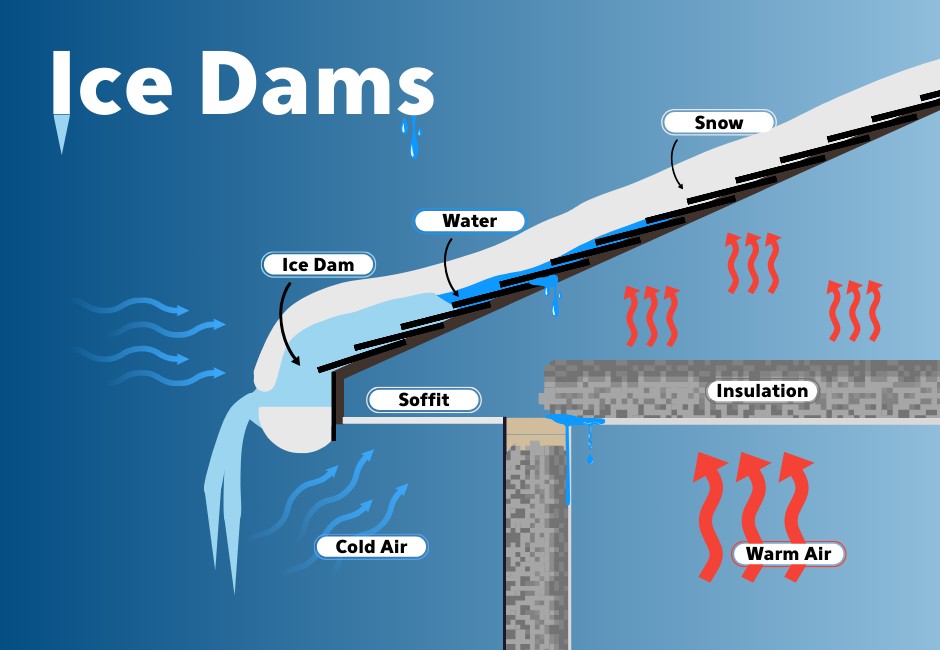
There are a few indicators that can help to identify ice dams before they become severe.
- Icicles – Icicles are a sign that excess heat and/or moisture is escaping from your property. Icicles themselves can cause damage to gutters and eaves, but they are a warning sign that more water and ice may be present on the rest of your roof. If your attic is not properly insulated, (this could be the case if there is no moisture barrier present or an inadequate amount of insulation) excess loss of heat and transfer of moisture will continue to cause problems such as ice dams and icicles.
- Snow Buildup – The amount of snow on your roof can similarly be viewed as the amount of water on your roof. The more snow that is present, the more water that will melt with warmer temperatures throughout the day. If you have a foot (or more) of snow on your roof, there is a higher likelihood for water buildup to occur. It is best practice to use a roof rake to keep snow levels at a minimum throughout the winter and spring. Doing so keeps the amount of “water” low, as well as makes visibility possible at all times.
- Water Staining – Although water staining to walls, ceilings, and windows indicates some level of damage/water intrusion has occurred, catching it early still allows you to take action before the problem progresses further. Additionally, it provides insight into where the ice dam/roof leak is occurring, as you can estimate the location due to water following the path of least resistance and the effects of gravity. This can also give an indication of where else to check for damage/moisture as water can travel from ceilings to walls, and from walls to windows, adjacent floors, and cabinets. In advanced cases, even the stories below.
If you discover the presence of ice dams on your roof, it is in your best interest to remove them right away. It is possible to Do-It-Yourself, but many of these solutions require you to access the roof in the winter months. Something that isn’t achievable or recommended for everyone. Specialty Ice Dam contractors as well Roofing and Snow Removal companies will likely be able to assist with the removal of the ice dam.
From there, it is best to perform regular maintenance like roof raking to keep the problem in check until the cold is gone for good. Once warmer weather returns, long term solutions such as re-insulating your attic or installing de-icing cable can be completed in preparation for next winter.
2) Snowmelt
As winter comes to a close, the snow left on the ground begins to make its exodus, too. But where does it go, and how much can your property handle? While every property is different, there are facts and figures which can aid in understanding the risks that snowmelt brings.
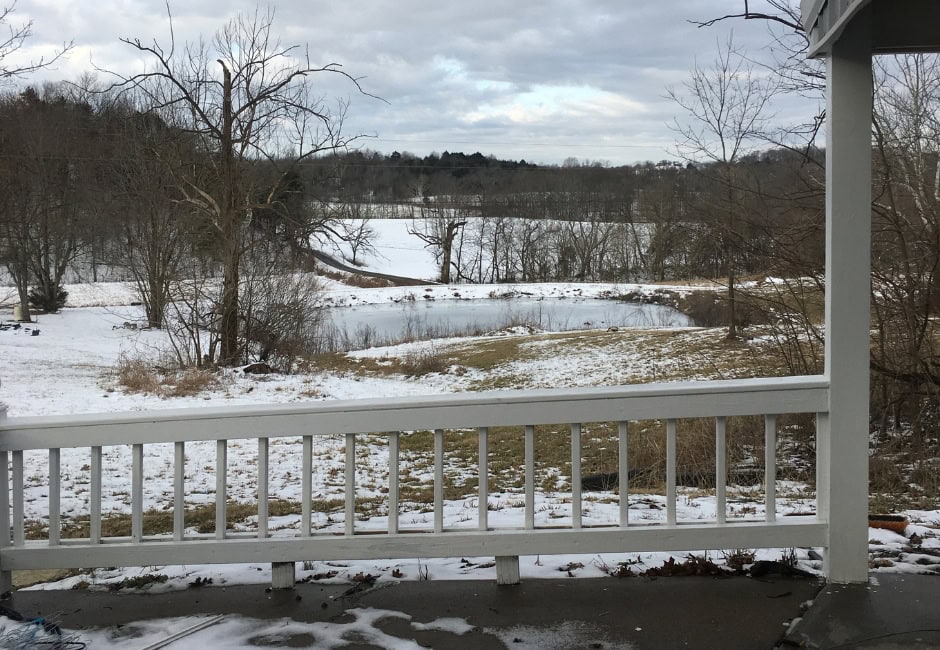
The average snowfall in Duluth is 86.1” per year. However, the amount of snow that stays on the ground will naturally differ. In the month of March, an average of 18.1 days (out of 31) have at least 10” of snow on the ground, and 26.8 days have snow cover of 1” or more. In the month of April, the number of days with 10” of snow drops to 2.1 days (out of 30) and 9.8 days of at least 1”. With this information, we can conclude that a majority of snowmelt happens during the months of March and April in Duluth. In addition, snow continues to fall through March and April, averaging around 12” (March) and 11” (April), historically, with May averaging approximately 1”. Around this time, rain is also thrown into the mix, with March, April, and May averaging 0.7”, 1.8”, and 2.8” of rain, respectively.
The final factor to add is the ground’s capacity to take on water, or its saturation point. Throughout winter, frost penetrates the ground and is slowly pushed deeper due to sustained cold temperatures and continued use on the surface. When taking frost depth into account, the saturation point becomes lessened as water is not able to be absorbed by frozen ground, similar to pouring water over an ice cube.
As snow melts and precipitation falls, the excess water often makes its way into and below foundations. This causes issues for a multitude of reasons, with the primary being:
- Basement Flooding and Sump Pump Backups
Most properties have some form of drainage system which either directs water away from the structure or directs water to the structure, where it is then forcibly removed. Unfortunately, these systems can be overwhelmed by the influx of water brought on by snowmelt. When water is directed into the basement, typically into a sump pit, a sump pump pushes the water outside of the property when the pit reaches a certain fill level. These systems can become inundated with high water volume, experience a power outage, or break in a variety of ways. When this happens, the system is no longer able to divert the incoming water, and it backs-up into the basement where large amounts of damage can occur. Typically, water damage caused by sump pump backups is covered under a specific rider in your insurance policy, but not by default. If you haven’t elected to pay for this additional coverage, your property may not be covered for losses caused by sump pump backups. This is one of the many reasons it is important to work with your insurance provider to make sure you have the right amount of coverage.
No matter the drainage system you have in place, extreme snowmelt can still lead to flooding in your basement if the water coming in out-paces what is able to be redirected. When water enters your property through egress windows, at the base of sliding doors, or between gaps in your foundation, it is considered to be flooding. Flooding, which differs from typical water damage covered by homeowners or commercial property insurance, can cause major damages and oftentimes is much harder to stop once it starts. While you can turn off the water supply to your property to stop pipes from leaking, when flooding occurs, it requires the property owner to manually remove or redirect the flow of water to halt the damage.
According the Federal Emergency Management Agency (FEMA), just an inch of floodwater can cause as much as $25,000 in damages.
- Foundation Cracks and Leaks
Foundation cracks and leaks are considering to be “flooding” as well, and consequently, the damage caused by slow or moderate leaks is not covered under standard insurance policies. While these issues may be apparent year-round after heavy rains in the Summer and Fall, they typically become most apparent during Spring thawing periods.
Foundation issues may require work both inside and outside of your property in order to fix the damages already present, and prevent the same issues from happening in the future. This can be done through the sealing of gaps and cracks, supporting the structure of foundation walls, and adjusting the grade around your property.
3) Wind and Storm Damage
Springtime in Minnesota often brings powerful storms with high winds, heavy rain, and even hail. These weather events can cause significant damage to roofs, siding, windows, and outdoor structures. Being aware of the risks and knowing what to look for can help you take quick action to minimize damage and repair costs.
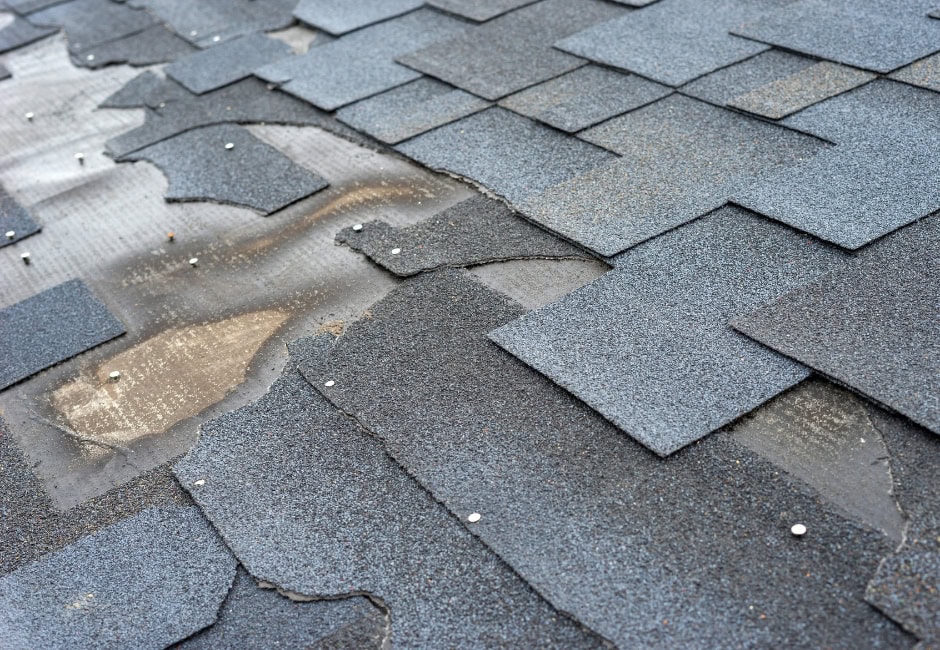
Roof and Siding Damage
High winds can lift or tear off shingles, damage flashing, and loosen siding, exposing your property to water infiltration and structural damage. Heavy rain accompanying high winds can then seep into these vulnerable areas, leading to leaks, mold, and rot. Hail can further compound the damage by denting or cracking roofing materials and siding.
Indicators of wind and storm damage include:
- Missing or Loose Shingles: Wind can lift shingles, breaking the seal that keeps water out. This damage is often hard to see from the ground, so consider getting a professional inspection after strong storms, especially if you find loose shingles laying on your property.
- Dented or Cracked Siding: Hail and wind-driven debris can dent metal siding or crack vinyl siding, leading to potential moisture issues. Not to mention the cosmetic burden that comes with damaged siding.
Water Stains or Leaks: Similar to Ice dams, water stains on ceilings or walls indicate that rainwater has found a way in, often through roof or siding damage.
Wind and storm damage can escalate quickly, so it’s important to inspect your property after severe weather and address any damage promptly. While there aren’t many proactive measures that can prevent wind and hail damage, you can minimize impact by sealing gaps and cracks around windows, regularly checking your roof’s condition throughout the year, and using sturdy building materials on the exterior of your home.
For these issues and more, Dryco Restoration Services is available to aid local property owners with damage resulting from Springtime hazards. If you need immediate assistance, reach out to us at (218) 628-6101 for 24/7 Emergency Service!
Got a question? Contact us for more information, or read up on topics our team has covered in the past, here.
A special thank you to Reliable Insurance Agency for their help in creating this blog. For more information on Reliable and their team, visit their website to learn more.
